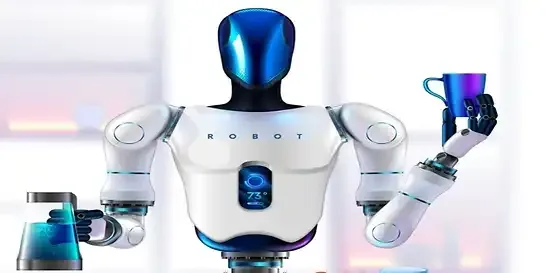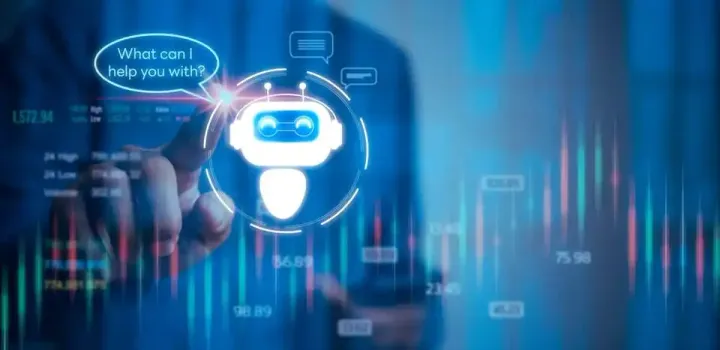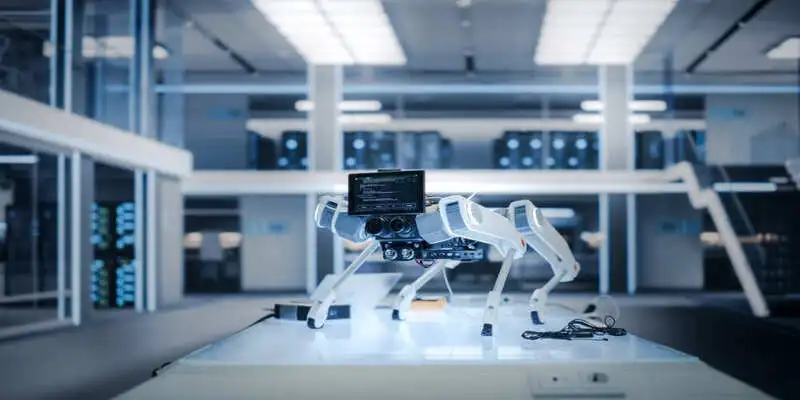Tea-Making Robot: China’s Leap from AI-Powered Picking to Brewing
China’s invention of the Tea-making robot is a captivating demonstration of how China is integrating high-tech innovation into cultural tradition. The brass-finished robotic arm introduced at the Expo went far beyond brewing. It worked as both a technological showcase and a cultural ambassador.

China’s momentum in AI and robotics has been breathtaking. Housing more than 4,500 AI companies and ranking #2 globally in AI readiness, the world’s second-largest economy is powering ahead. The nation is merging modern innovation with age-old customs, and where else can this blend be more evident than in tea? After, the tea-picking robot “Xunxiao' revolutionized the fields, China is now brewing something special to be served in a teacup- A futuristic Tea-making Robot.
Tea-Making Robot Steals the Show at China-South Asia Expo
At the 9th China-South Asia Expo, held June 19-24, 2025, in Kumming, China introduced a Tea-making robot. This sleek robotic arm captured the attention of the audience by making tea with flawless precision. It further impressed the visitors by following Chinese tea rituals. It performed all the traditional steps with elegance. The visitors were intrigued by how this tea-making robot presented a smooth blend of centuries-old culture and cutting-edge technology.
How It Prepared Tea
The tea-making robot’s performance at the Expo mirrored the four cultural steps of the traditional Chinese tea ceremony.
- Scalding: First, the sleek robotic arm moved to a designated station with a classic tea set and poured hot water into the teapot and cups to clean and preheat them.
- Adding Tea Leaves and Water: Then the robot added the right amount of tea leaves into the pot. It then poured water, starting with a fast stream and then slowing, following the famous technique in tea-making known as “high rush and low sprinkle.”
- Tea Brewing: The robot kept the water at the ideal heat by monitoring the temperature with sensors. It timed the steeping according to the user preference and tea type while adjusting tea brewing time as needed.
- Pouring Into Cups: Finally, the robot poured the tea into cups with a “phoenix three nods” rhythm. Its speed and angle of pouring were the same as that of a human tea master.
The robot turned the traditional tea-making ritual into an amazing, precise, and modern performance. This robotic demo represented how technology can honor tradition.
China’s Robotic Journey from Tea Picking to Tea Making
The First Step: Xunxiao Picks the Buds
In spring 2023, China introduced the world’s first humanoid tea-picking robot in the Huizhou tea gardens. This was the beginning of automated tea harvesting. Xinxiao with three-axis manipulators, suction-assisted tips, and real-time spatial mapping, represented a significant leap in applying AI to agriculture.
Developed by Youibot-XJTU, the dual-arm tea-making robot leverages deep learning, binocular stereo vision and expert systems to identify and pluck only the freshest tea buds with its scissors and suction tubes. In early 2024, the team released the 5th-generation model that can pick a tea bud in about 1.5 seconds with 86% accuracy. This was a significant upgrade from earlier models. Now, multiple tea-picking robots are working in Longjing plantations. A single robot has been reported to harvest about 0.75kg of dry tea per day, replacing 1.5 manual workers while reducing labor costs by 25%. Operating across rugged plantations in Zhejiang and Guangdong, Xunxiao delivers precision within 0.5cm while maneuvering across uneven terrain. These robots are boosting daily efficiency and positioning the technology as a practical substitute for manual labor in premium tea production.
The Next Frontier: Tea-Making Robot at Expo
China’s tea-picking robots paved the way and encouraged to introduce its next evolution to continue the robotic journey and complete the full circle: a tea-making robot that brings harvested leaves to life. Leveraging embedded AI and sensors array, this brass-finished robotic arm heats water, monitors its temperature, manages steeping times, and pours tea into cups. The Expo robot follows all the gestures of a traditional tea ceremony. It respects cultural standards while reflecting engineering elegance.
These robots leverage AI-powered vision systems, precision-controlled manipulators, sensors, and embedded intelligence to provide a farm-to-cup robotic solution that not only boosts efficiency but also merges productivity with heritage.
Final Thoughts
China’s robotic journey from tea-picking to tea-making is a statement of cultural integration. The initiative of the Tea-making robot signals that China’s AI vision extends far beyond labs. It is stepping into everyday life and reshaping regional engagement. Xinxiao and the Expo robot fulfill complementary roles in a farm-to-cup automation pipeline. Together, they illustrate how AI can respect and elevate heritage rather than replace it.


